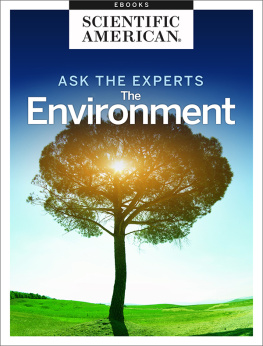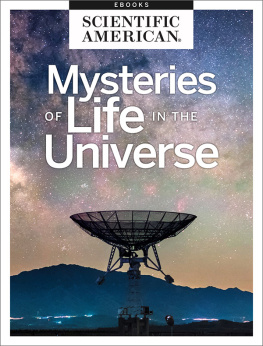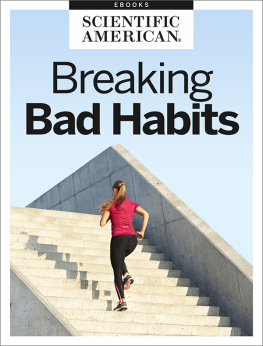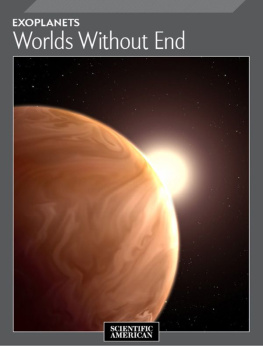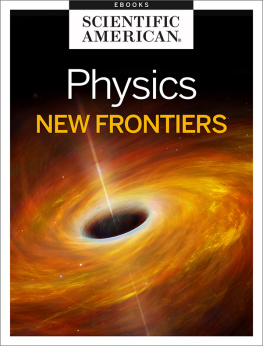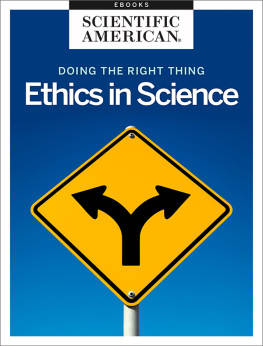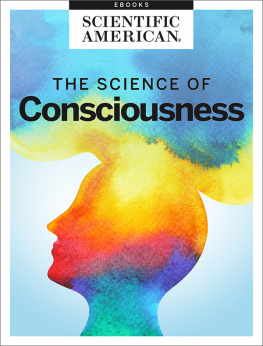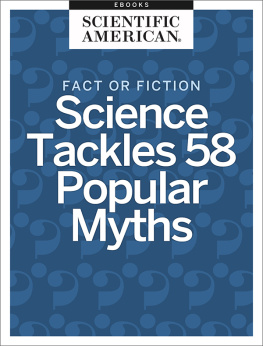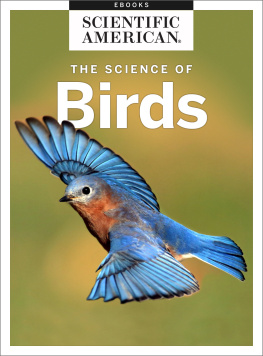Ask the Experts
The Environment
From the Editors of Scientific American
Image: joruba/Getty Images
Letters to the Editor
Scientific American
One New York Plaza
Suite 4500
New York, NY 10004-1562
or editors@sciam.com
Copyright 2017 Scientific American, a division of Nature America, Inc.
Scientific American is a registered trademark of Nature America, Inc.
All rights reserved.
Published by Scientific American
www.scientificamerican.com
ISBN: 978-1-4668-5903-6
Scientific American and Scientific American MIND are trademarks of Scientific American, Inc.,
used with permission.


ASK THE EXPERTS
The Environment
From the Editors of Scientific American
Table of Contents
Introduction
by Geoffrey Giller
Section 1
1.1
by Paul A. Deck, Steven A. Ackerman, Harvey Wichman and Jeffrey S. Peake
1.2
by Richard C. Brill
1.3
by Douglas Wesley
1.4
by Donald H. Lenschow
1.5
by Richard C. Brill
1.6
by Jeffrey Hovis
1.7
by Tom K. Priddy
1.8
by Miriam Rossi and Howard T. Evans, Jr.
1.9
by Matt Peroutka and Fred W. Decker
1.10
by Chris Weiss
Section 2
2.1
by Harold Brooks and David Biello
2.2
by Harold Brooks
2.3
by Joshua Wurman
2.4
by Greg Valentine and Larry Greenemeier
2.5
by Attila Kilinc
2.6
by Karen Harpp
2.7
by Chris W. Landsea and Kerry Emanuel
2.8
by Jose Maliekal
Section 3
3.1
by Steven Chu and David Biello
3.2
by Roger N. Anderson
3.3
by Jim Burkhard and Sophie Bushwick
3.4
by David Oppenheimer and Katherine Harmon
3.5
by Peter H. Gleick
3.6
by Marion Nestle and Michael Moyer
Section 4
4.1
by Pieter Tans
4.2
by Kevin Trenberth and David Biello
4.3
by Anne M. Waple
4.4
by Jean M. Andino and F. Sherwood Rowland
4.5
by Ross J. Salawitch
Section 5
5.1
by Quentin Williams and Gregory Lyzenga
5.2
by Michael Wysession
5.3
by Robert Mulvaney
5.4
by Wolfgang Ketterle
5.5
by Robert Bindschadler
5.6
by Paul Shepson and Michael Tinnesand
5.7
by Gary A. Glatzmaier and Edwin S. Robinson
5.8
by Richard C. Brill
5.9
by Daniel M. Hanes, Robert S. Anderson and Walt Hoagman
Section 6
6.1
by Steven Allison
6.2
by Anthony D. Del Genio
6.3
by Karen Harpp
6.4
by Gregory A. Lyzenga
6.5
by Jerry Nelson, Jay M. Pasachoff and Andrew T. Young
6.6
by Tobias C. Owen and James C.G. Walker
6.7
by James Partain
6.8
by Miriam Rossi
6.9
by Robert Greenler
6.10
by William Ducker
Have You Ever Wondered
Humans are innately curious.
From a young age, we start to ask questions about the world around us. We want to understand why things are they way they are. But even the most simplistic-sounding questions Why is the sky blue? or Why do things fall down? turn out to have surprisingly complex answers. (In brief, light scattering by the atmosphere and gravity are the answers to those questions, though of course the technical answers are much more in-depth).
If simple questions have such relatively complex answers, then the more sophisticated questions that arise as we get older must also have more complicated answers. For those more difficult problems, we must often turn to experts. Scientific Americans Ask the Experts column has been doing just that for years. Across all fields of science, Scientific American has asked top scientists, professors and researchers to answer questions from the basic to the esoteric. Many questions came from readers; others came from our editors. Some questions relate to recent events, while others have to do with long-standing theories; some affect our daily lives, while others are for the pure pursuit of knowledge.
A popular department that ran for almost two decades, the hundreds of entries in our archives run the gamut across subjects from health to the environment to technology. Weve combed through those archives and have compiled some of the most interesting questions (and answers) into a series of eBooks. Organized by subject, each eBook within the series provides short, easily digestible answers to questions on that particular branch of the sciences.
In this installment, The Environment, we tackle questions about the world around us. Section 1 opens with questions about the weather, such as what causes thunder and why snowflakes are symmetrical. In Section 2, scientists answer questions about some of the most destructive events on earth: natural disasters. Find out why tornadoes target the Midwest and how earthquakes trigger tsunamis. Natural resources are the theme of Section 3, with questions such as why is oil usually found in deserts and arctic areas? And why dont we get more drinking water from desalination?
Section 4 takes a good look at the science of climate change, with thought-provoking questions about how global warming can be linked to CO2 and how climate change has affected tornado frequency. In Section 5, experts answer inquiries about how we measure some of the most extreme temperatures and forces on the planet, such as the temperature of the earths core and the strength of our planets magnetic field. Finally, in Section 6, we examine remarkable phenomena. What determines the size of a rainbow? How are graphite and diamond so different when theyre both made of pure carbon? Professors, scientists, and other experts provide answers that are at once accurate, understandable, and sometimes just plain funny.
Searching for answers to questions on Astronomy? The Animal Kingdom? The Human Body? Be sure to check out our other eBooks in this series. Youll discover things like what makes a knuckleball flutter, why the Big Bang didnt collapse into a black hole, how whales and dolphins sleep without drowning, and much more.
--Geoffrey Giller
SECTION 1
Todays Forecast: Weather
Why Do Clouds Always Appear to Form in Distinct Clumps?
Paul A. Deck, assistant professor of chemistry at Virginia Polytechnic Institute andState University, gives a brief explanation:
"The earth's atmosphereespecially local parts of the atmosphereis not at thermalequilibrium. The world turns, the sun rises and sets, and surface temperatures go upand down. There simply is not enough time to disperse evenly the effects of suchhuge thermal disturbances. The combination of all the disturbances (fromtemperature changes, ocean tides and so on) contributes to the variability that weobserve over relatively short distances. The complexity of this problem underscoresthe pressing need for the National Weather Service to have the most powerfulcomputational equipment and the finest minds in applied mathematics."
Steven A. Ackerman is an assistant professor of atmospheric and oceanicscience at the University of Wisconsin-Madison. He offers a fulleranswer:
"Most clouds form in rising air. As a volume, or parcel, of air rises, it expands andcools. In addition, the relative humidity of the rising air increases. As the parcelapproaches the point of saturation, water vapor condenses to form tiny waterdroplets or ice particles, creating a cloud. Saturation occurs at a distinct altitude,which varies depending on the temperature and humidity structure of theatmosphere. Below this condensation level clouds do not form; this cutoff explainswhy cloud bases have a distinct appearance and are usually flat. Some clouds aremore diffuse at their edges than others. How sharp the cloud edges appear dependson the type of cloud, the humidity of the surrounding clear air and how close you areto the cloud.

